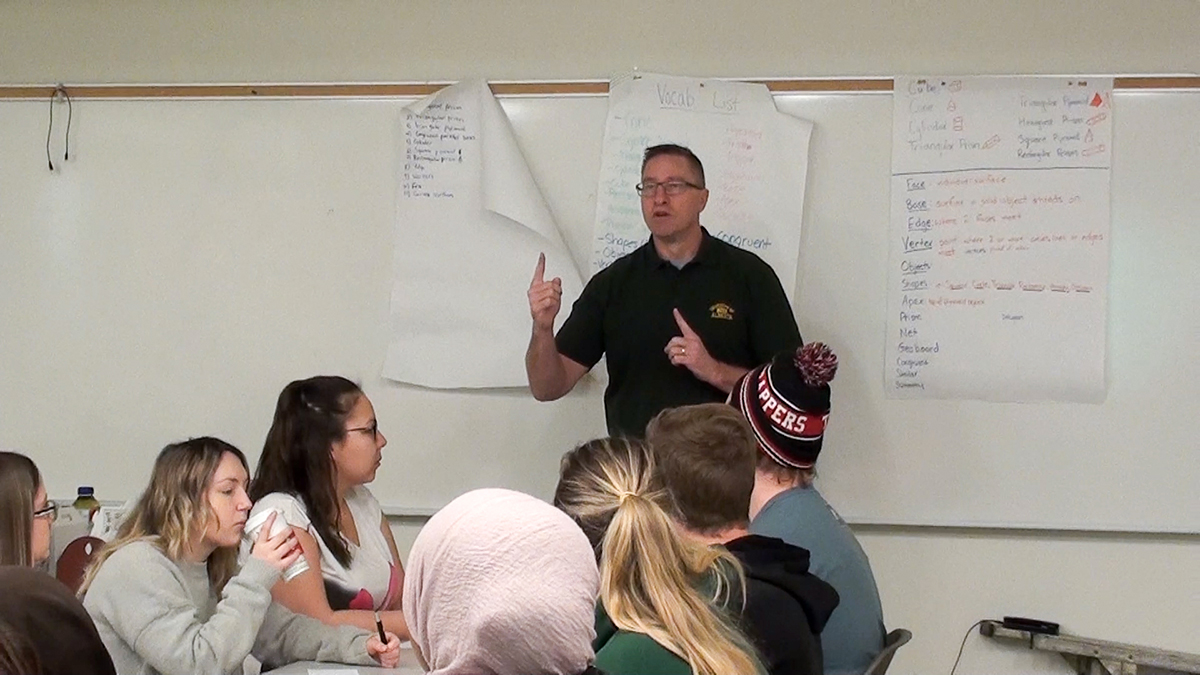Teaching Joy with Dr. Doug Gleddie
What does it mean to teach the whole person, to practice holistic education? In his discussion about teaching joy through physical movement, Dr. Gleddie invites us to consider the social-emotional as well as the physical in our teaching practices.
"We often talk in education about whole-child education and about holistic education, but we don't do it because we neglect the physical." Doug Gleddie
Teaching Philosophy Statement
These two elements form the core of my philosophy of teaching physical education.
Movement for the sake of Movement.
Movement can stand on it's own - it has inherent worth and efficacy all by its lonesome. Ann Thelen stated, "People perceive in order to move and move in order to perceive. What, then, is movement but a form of perception, a way of knowing the world as well as acting on it?" (1995). Movement is essential to who we are as human beings and is absolutely critical to growth and development across the lifespan. The health and academic benefits are a great bonus, but are really just an extension of how movement is part of our human identity and helps us negotiate the treacherous terrain of life. Therefore, education should not be considered "whole-child" unless it includes education of the physical.
The Intrinsic Joy of Movement.
I was fortunate a few years ago to be snowboarding in the Rockies on a day where a foot of fresh powder had just fallen. As one of the first people up the lift, it was awesome to hear - from all across the mountain - spontaneous cries of joy from those reveling in the snow. We need this joy! As Scott Kretchmar writes, "When movement is experienced as joy, it adorns our lives, makes our days go better, and gives us something to look forward to. When movement is joyful and meaningful, it may even inspire us to do things we never thought possible" (2008, p. 162). The fact is, kids (and adults!) are motivated by joy and will work/play extremely hard to find it. As a bonus, they'll also get all the health and academic benefits. If you want to see an example of this ethic in action, go visit a skate park. There you'll see people finding joy in learning - intrinsic motivation at it's best and not a trophy or rubric in sight. Every term, the first day of my undergraduate Curriculum and Pedagogy for Elementary Physical Education class includes juggling. We juggle, because in 20 minutes, every student in my class can experience the intrinsic joy of human movement through mastering a complex skill. I feel there is no better way to introduce students to physical education than with an embodied, successful experience of movement.

"Joy is about challenge, and it's about hard work, and it's about success, but it's also about failure. [...We ask] 'how do you experience joy through movement?'" Doug Gleddie
About Dr. Doug Gleddie
Dr. Doug Gleddie is a husband and father who also happens to be an Associate Professor in the Faculty of Education at the University of Alberta (Elementary Physical Education). In a career filled with change, the only true constants have been physical activity/education, working with kids, and how joy fills the spaces in between. Although it took him a while to fully embrace this epiphanal thought, the journey itself has enabled Doug to work with a wide variety of people and organizations across Canada and around the world. Doug teaches physical education curriculum and pedagogy to undergraduate students. He also teaches graduate courses in health and physical education, reflective practice, physical literacy and research methods. Dr. Gleddie's research foci include: narratives of physical education; school sport; physical literacy praxis; meaningful physical education and; teacher education. He takes care of his own wellness by being active with his family, improving his guitar picking, and seeking new challenges each day. Visit Doug's blog at www.purposefulmovement.net
Awards
Provost's Award for Early Achievement of Excellence in Undergraduate Teaching, 2017
Faculty of Education Award for Excellence and Innovation in the Use of Technology for Teaching and Learning, 2015